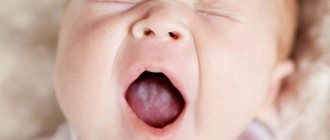Piercing is a procedure in which a puncture is created in the body for wearing jewelry. An open wound takes a long time to heal and requires especially careful care. However, if a person does not properly care for an unhealed puncture, and the technician works poorly and does not care about the sterility of the instruments, this leads to serious complications. To avoid becoming a victim of piercing, you need to familiarize yourself in advance with the likely negative consequences and the reasons for their development.
How long does it take for a piercing to heal and how to understand that complications have arisen
A fresh puncture goes through three stages: inflammatory, active healing and restorative. The duration of each stage depends on the location where the hole is made. For example, a nose piercing takes 1-2.5 months to heal, an eyebrow piercing takes 2-3 months, and a tongue piercing takes 3-4 months. Read more about healing times in our separate article.
The first signs will help you understand that complications have begun to develop in the puncture area:
- too much redness in the puncture area;
- itching;
- pain;
- feeling of heat in the wound area and increased body temperature;
- purulent discharge.
Answers
Capricorn7 7 years
this is the beginning of cancer
elkorplaza1 3 (770) 1 10 38 7 years
Druzhok 5 (2765) 7 26 7 years
As they said above, it will pass later. I can also add that rinsing can cause plaque to form. Chlorhexyldine, Miramistin can only be dripped into the wound if you are afraid, they will cause a white coating and turn your teeth yellow. It is best to use diluted calendula, it will only cause a red coating. Be strong! In 2 weeks you will be like a cucumber. In the meantime, keep drooling
Why complications arise
The reasons for an unsuccessful puncture, depending on who provoked the complications, can be divided into two groups:
- Complications due to the fault of the master. Masters who work at home without the appropriate certificates and permits often make the procedure unsafe: they do not maintain sterility, do not undergo medical examinations, and pierce incorrectly. As a result, an infection enters the wound, and the instrument damages nerves and blood vessels.
- Complications caused by the client. Often clients are not ready for a long recovery period and do not follow the specialist’s recommendations. The wound requires careful, long-term care over several months, and if the wound is not treated or injured, this leads to infection.
Nose piercing
It has its own characteristics and care for nose piercing. Although the nose swells at the puncture site much less than the mouth and after two days the swelling begins to subside, complete healing lasts up to 10 weeks. If the swelling does not subside on the fourth day, then this is a cause for concern and consultation with your specialist in Rostov-on-Don. For the first three weeks, the new jewelry should be washed with Miramistin or Chlorhexidine several times a day. At least twice, preferably four times a day. If, however, the wound festers and turns red, you can lubricate it with Levomekol, but not more than a week in a row. You should not touch the jewelry again, especially with unwashed hands. Gently dry your face with a towel, without touching the earring. It is not recommended to visit the sauna, swimming pool or even take a hot shower. Prolonged exposure to the sun and cosmetics that prevent air from reaching the puncture slow down healing. In the first days after surgery, it is better not to drink coffee, alcohol and aspirin. The piercing site should be protected from cold and drafts.
Negative consequences after tongue piercing
Tongue piercing most often provokes the following complications:
- speech disorders, lisp;
- severe throbbing pain;
- damage to tooth enamel by decoration, chips and cracks;
- difficulty chewing food;
- atrophy of the taste buds, as a result of which the sense of taste decreases;
- impaired blood supply, anemia.
Lip piercing
Caring for a lip piercing has a lot in common with caring for a tongue piercing. It is also necessary to adhere to a diet, refrain from kissing and oral sex, and rinse the oral cavity with individually selected solutions of disinfectant liquids. The replacement of a long nail with a short one occurs in a similar way after the swelling subsides. But lip piercing requires additional attention: daily (preferably in the morning) the jewelry should be treated with saline solution, dissolving and removing the scab. After cleansing, the wound is lubricated with lavender oil, carefully turning the jewelry so that the oil gets inside. Healing usually takes about a month, sometimes complete healing can take up to eight weeks, which is absolutely normal. It is also normal for the jewelry to “nest”—move to the inside of the lip. Rings are more prone to this behavior than studs, as they are more mobile.
Consequences of a bad navel piercing
The most common complication after navel piercing is jewelry rejection. Occurs if the body does not accept the jewelry and tries to get rid of it on its own - push it out of the wound.
It may also happen:
- earring failure or wound injury - the abdominal area is constantly in contact with wardrobe items that can easily damage the puncture;
- Stretching the piercing – if the piercing is too small or close to the edge, heavy jewelry can overly enlarge it, and the consequences will have to be corrected in the surgeon’s office;
- Stretch marks (striae) on the abdomen are a common complication that appears during pregnancy in women who have previously had their navel pierced.
What to Avoid While Your Tongue Heals
What to avoid:
- Hard, sour, sticky, spicy foods.
- Talk too much.
- Kissing and any other use of the mouth with girlfriends/friends
- Putting foreign objects in your mouth.
- Smoking (it’s better to abstain at first, and once the piercing heals, then quit smoking altogether)
- Experiment with tongue decoration (you will have plenty of time for this after healing)
The swelling should go down in a couple of weeks, but the healing period may take longer.
Once pierced, the tongue usually takes three to four weeks to completely heal. This is one of the fastest-healing piercings as the enzymes in saliva help fight infection and kill bacteria.
This is interesting: How to stretch an ear piercing to a larger caliber
You will need to use a good non-alcoholic mouthwash to help clean your mouth, but be careful not to over-clean, which can cause your tongue to turn green or brown. If this happens, simply reduce the amount of mouthwash you use and how often you use it.
- Days 1-5: After the first day, you will experience bloating. This will be worse during the first five days, when your speech will be impaired and you may have to change your diet to mashed potatoes, noodles, and other soft foods. Drinking cold drinks helps. For faster healing, you should avoid drinking alcohol or hot drinks, smoking, kissing, fiddling with or even touching a barbell, and ibuprofen and aspirin (which can increase swelling—use Tylenol instead).
- Days 5-7: The swelling will begin to decrease. Some people recover faster than others.
- Days 7-10: Swelling should go down now. When this happens, you need to have the bar replaced with a shorter one. The day you can replace the long barbell with a shorter one will depend on the amount of swelling you experience.
- Day 10-28: It may take 3 to 4 weeks to heal completely.
When can I remove the jewelry from my tongue and for how long?
The answer to this question varies from person to person. Tongues heal quickly, and even if the piercing is technically healed, it will also heal and close if you leave the jewelry out for an extended period. Some piercings can heal closed almost immediately in a day or two, while others with established piercings say they can go without jewelry for up to three weeks, don't worry.
This is interesting: A beginner's guide to ear stretching
Consequences of unsuccessful ear piercing
Earlobe piercing rarely causes complications; problems most often arise when the cartilage is pierced. Cartilaginous tissue takes a long time to heal, painfully, and often rejects the earring and festers. Benign tumors can form on them, which need to be removed surgically. Unsuccessful piercing can lead to drooping ear cartilage, which will have to be corrected with plastic surgery.
There are many nerve endings in the ear area. If they are hit, it can cause facial paralysis. If the piercing procedure is seriously violated, hearing loss may develop.
How to deal with complications after a piercing
At the first signs of improper healing, you should contact your doctor or consult with a specialist. Timely seeking help will help avoid serious consequences and stop the pathological process.
Before visiting a doctor, you can:
- wipe the area with the decoration with an alcohol solution;
- apply a cotton swab soaked in an antiseptic (for example, Furacilin or Chlorhexidine) to the wound;
- apply a gauze swab lubricated with Levomekol or Tetracycline ointment.
How to reduce healing time
- Keep the swelling down. Drink ice-cold drinks, preferably water.
- Keep it clean. This includes cleaning not only the piercing site, but the entire mouth. Brush at least twice a day. Rinse and rinse after every meal, after drinking anything other than water, when you first wake up, and before bed. Use an alcohol-free and fluoride-free antibacterial mouthwash or a glass of water with a teaspoon of sea salt (not iodized table salt!) dissolved in it.
- Wear the right jewelry. Make sure the dumbbells are tightly holding the bottom ball while you rotate the top ball clockwise. After the initial swelling reduces, your piercer will change the longer bar to a shorter one. After this, you don't want to change the decorations too often, which could irritate the site and prolong the healing. Titanium is the least likely material to trigger an allergic reaction.
- Avoid irritants. Don't put your fingers in your mouth. Do not touch, poke, or handle jewelry. If you talk or chew a lot, rinse your mouth afterwards. Do not drink alcohol, smoke, kiss or expose your mouth to anything other than food, drinks, mouthwash, toothpaste, salt and water.
- Watch for signs of infection. Of course, infection delays healing, so if you experience swelling, redness, angry-red streaks, change in color or discharge, consult your doctor right away.
How to avoid complications
To ensure healing is as safe as possible, you must adhere to several rules:
- the procedure should be done in a specialized salon;
- check how well the procedure for sterilization and disinfection of instruments is followed;
- make sure that the master has a certificate of completion of training, a license, and a medical book;
- strictly follow the doctor’s recommendations for caring for a fresh wound;
- Avoid going to the sauna, bathhouse, swimming pool, or the beach for 2-3 months after the procedure.
FAQ
- Are there any contraindications to piercing?
Yes, I have. A puncture cannot be done if you have a number of diseases: diabetes, AIDS and HIV infection, viral hepatitis, herpes, mental disorders, epilepsy, oncology. Also, the procedure is not performed during pregnancy or lactation.
- Which area is the most painful to pierce?
It all depends on the individual pain sensitivity threshold. It is believed that the most severe pain is caused by piercing the nipples, ear and nose cartilage. The least painful puncture is in the earlobe.
- What jewelry material does not cause allergies and complications?
For the initial puncture, jewelry made of safe hypoallergenic titanium, medical steel, polytetrafluoroethylamine (PTE/PTFE), bioflex, and acrylic are recommended.
Share link:











